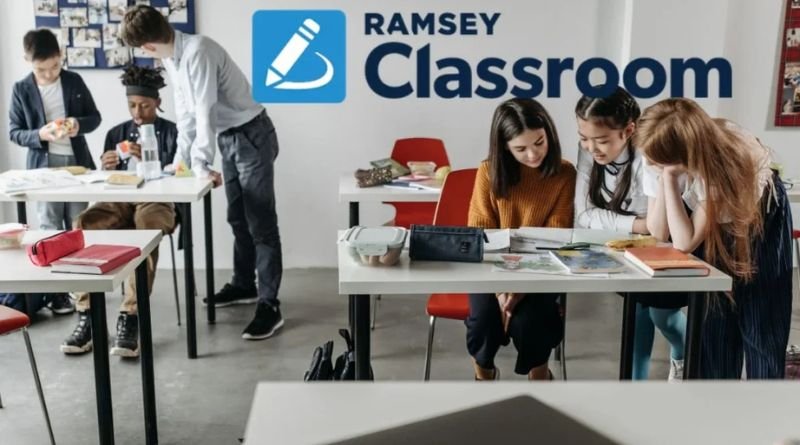“Ramsey Classroom” is a financial education program created by personal finance expert Dave Ramsey and his team, designed to teach students fundamental money management skills. By providing comprehensive, age-appropriate curricula for elementary, middle, and high school levels, Ramsey Classroom empowers young people to make sound financial decisions from a young age. Known for its engaging and practical approach, the program combines interactive lessons, real-life simulations, and multimedia content to help students understand budgeting, saving, investing, debt management, and more.
Table of Contents
What is Ramsey Classroom?
Ramsey Classroom is an educational platform that equips teachers with resources to deliver financial literacy lessons in school classrooms. The program is part of Ramsey Solutions, a company founded by Dave Ramsey, who is widely recognized for his work in personal finance. The curriculum is structured to provide students with knowledge and tools that can help them navigate finances in the real world.
The program offers lesson plans, digital content, and assessment tools for educators, making it easy to incorporate financial literacy into school settings. This curriculum covers a range of financial topics designed to develop responsible financial habits early in life.
Key Features of Ramsey Classroom
- Comprehensive Curriculum
Ramsey Classroom provides lessons on budgeting, savings, investing, and debt. The program’s curriculum is broken down into easy-to-understand modules, each tailored to different grade levels to make financial concepts accessible to young learners. - Interactive Learning
Rather than just theoretical learning, Ramsey Classroom emphasizes experiential learning through real-life simulations. For example, students might practice budgeting with a mock monthly income or learn to navigate credit decisions through simulations. - Teacher Support and Resources
Educators benefit from structured lesson plans, worksheets, and digital tools that simplify teaching financial literacy. This support ensures teachers can engage students effectively without needing extensive personal finance knowledge. - Digital and In-Person Flexibility
The curriculum is available online, making it flexible for both in-person and remote learning environments. Digital tools, quizzes, and games keep students engaged, while in-person resources provide additional support for hands-on activities. - Certificates and Assessments
Ramsey Classroom includes progress assessments and certificates to recognize students’ accomplishments. These milestones keep students motivated and allow teachers to measure learning outcomes effectively.
Why is Financial Literacy Important for Students?
Financial literacy is often an overlooked subject in traditional education, yet it is crucial for lifelong well-being. Teaching students how to manage money responsibly prepares them to handle financial challenges and avoid common pitfalls like debt and poor credit. Ramsey Classroom aims to fill this gap by providing practical skills students can use as they grow older.
Financial literacy programs like Ramsey Classroom not only help students understand how to save and spend wisely but also prepare them for complex decisions regarding student loans, credit, investments, and long-term financial planning.
Ramsey Classroom Curriculum Highlights
- Elementary School Program: The curriculum for elementary students introduces basic financial concepts such as saving and spending wisely. Through fun games and activities, younger students learn the importance of delayed gratification and the value of money.
- Middle School Program: Middle school students engage with lessons on budgeting, saving, and setting financial goals. Activities at this level encourage students to think about needs versus wants and the benefits of working towards financial independence.
- High School Program: High school students delve into topics like debt management, investing, and understanding taxes. The curriculum is practical and real-world oriented, preparing students to make informed financial decisions as they enter adulthood.
Benefits of Ramsey Classroom
- Develops Lifelong Money Skills
By introducing finance education early, students develop responsible spending and saving habits that can benefit them for a lifetime. - Encourages Independence
Ramsey Classroom teaches students to set financial goals and understand how to work towards them independently, making them better equipped for financial success. - Prepares Students for Future Challenges
The program covers fundamental financial topics that will help students avoid common pitfalls, such as credit card debt or unnecessary student loans, making them financially responsible adults. - Supports Teachers in Financial Education
Teachers who may not have a strong background in finance can use Ramsey Classroom’s resources confidently, knowing that they have access to well-prepared materials and support.
FAQs About Ramsey Classroom
Q: Is Ramsey Classroom only available for schools, or can parents use it for homeschooling?
A: Ramsey Classroom is designed for use in traditional classroom settings, but it is also available for homeschool use, making it a versatile resource for both educators and parents.
Q: What topics are covered in Ramsey Classroom?
A: Ramsey Classroom covers budgeting, saving, investing, debt management, taxes, and more. The topics vary by grade level to ensure the material is age-appropriate and relevant.
Q: How much does Ramsey Classroom cost?
A: The cost of Ramsey Classroom varies based on the curriculum and grade level, as well as school and district needs. Some educators may qualify for discounts or school-sponsored access to the curriculum.
Q: Does the program provide certifications for students?
A: Yes, students can earn certificates upon completing certain milestones, which helps recognize their progress and achievements.
Q: Is the Ramsey Classroom curriculum compatible with digital classrooms?
A: Yes, Ramsey Classroom offers a digital version that makes it suitable for both in-person and online learning environments.
Q: What age groups are eligible for Ramsey Classroom?
A: Ramsey Classroom offers curriculum options for elementary, middle, and high school students, making it suitable for a wide age range.
Q: Are there assessments in Ramsey Classroom to track student progress?
A: Yes, Ramsey Classroom includes assessments to help teachers measure student understanding and track progress.
Conclusion
Ramsey Classroom is an invaluable resource for schools and homeschooling environments looking to provide practical financial education. By offering an age-appropriate, interactive curriculum, it gives students a solid foundation in financial literacy, empowering them to make wise financial choices throughout their lives. With its focus on real-world skills and teacher support, Ramsey Classroom is a powerful tool for building the next generation of financially savvy individuals.






